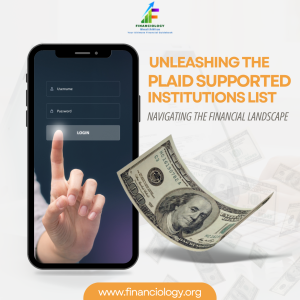The Various Types of Financial Institutions
8 min read
Demystifying Financial Institutions
Exploring the Variety in the United States
Discover the diverse landscape of financial institutions in the United States. From banks to credit unions, learn about the different types shaping the nation’s financial ecosystem.
In the vast landscape of the United States financial sector, a myriad of institutions play crucial roles in managing wealth, facilitating transactions, and driving economic growth. As we delve into the question “How many types of financial institutions are working in the United States?”, let’s unravel the diverse array of entities shaping the financial landscape.
Various Types of Financial Institutions

- Commercial Banks: Commercial banks are perhaps the most recognizable and widely used financial institutions. They offer various services, including savings and checking accounts, loans, mortgages, and investment products. Federal and state authorities regulate these institutions and play a pivotal role in providing liquidity to individuals, businesses, and governments.
- Credit Unions: Credit unions operate similarly to banks but are structured as non-profit organizations owned by their members. They offer similar services such as savings accounts, loans, and mortgages but often provide more personalized customer service and may offer lower fees and interest rates.
- Investment Banks: Investment banks primarily focus on providing financial services to corporations, governments, and institutional investors. They specialize in activities such as underwriting securities, facilitating mergers and acquisitions, and providing advisory services for complex financial transactions.
- Savings and Loan Associations: Savings and loan associations, also known as thrift institutions, specialize in mortgage lending and other types of consumer loans. Historically, they primarily focused on providing financing for home purchases but have since expanded their services to include various banking products.
- Mutual Funds: Mutual funds are investment vehicles that pool money from multiple investors to invest in a diversified portfolio of stocks, bonds, or other securities. They offer investors access to professionally managed portfolios and are regulated by the Securities and Exchange Commission (SEC).
- Brokerage Firms: Brokerage firms facilitate the buying and selling of securities on behalf of investors. They provide a platform for individuals to trade stocks, bonds, mutual funds, and other financial instruments and may offer investment advice and research to their clients.
- Insurance Companies: While primarily known for providing insurance products, insurance companies also play a significant role in the financial sector. They invest premiums collected from policyholders in various assets to generate returns and manage risk.
- Pension Funds: Pension funds manage retirement savings on behalf of individuals, employers, or governments. They invest funds in a diversified portfolio of assets intending to provide retirement income for beneficiaries.
The United States boasts a diverse range of financial institutions, each serving unique purposes and catering to different segments of the population. From traditional banks to specialized investment firms, these institutions collectively form the backbone of the nation’s financial system, driving economic growth and prosperity.
Understanding the various types of financial institutions empowers individuals to make informed decisions about managing their finances and achieving their long-term goals.
Understanding Plaid Supported Institutions List

Navigating the Financial Landscape: Explore the world of financial institutions and discover how the Plaid Supported Institutions List is revolutionizing the way people interact with their finances. From traditional banks to innovative fintech companies, learn about the diverse range of institutions supported by Plaid.
In today’s digital age, the way we manage our finances is constantly evolving. Gone are the days of traditional banking, as technological advancements have ushered in a new era of financial innovation. At the forefront of this transformation is Plaid, a technology platform that connects financial institutions with developers to create seamless financial experiences for consumers.
Let’s explore the Plaid Supported Institutions List and understand its significance in shaping the future of finance.
Plaid Supported Institutions List encompasses a wide range of financial entities, including traditional banks, credit unions, and innovative fintech companies. By partnering with Plaid, these institutions gain access to a suite of tools and services that enable them to securely share financial data with third-party applications and services.
- Traditional Banks: Traditional banks, such as Chase, Bank of America, and Wells Fargo, are among the many institutions supported by Plaid. These established financial entities offer a wide range of banking products and services, including checking and savings accounts, loans, and credit cards.
- Credit Unions: Credit unions, like Navy Federal Credit Union and Alliant Credit Union, also feature on the Plaid Supported Institutions List. These member-owned cooperatives provide financial services to their members and often offer competitive rates and personalized customer service.
- Fintech Companies: In addition to traditional institutions, Plaid supports a growing number of fintech companies that are revolutionizing the way people manage their finances. From peer-to-peer payment apps like Venmo and Cash App to investment platforms like Robinhood and Betterment, these innovative startups leverage Plaid’s technology to offer innovative financial solutions to consumers.
- Investment Platforms: Plaid also supports investment platforms and wealth management apps, allowing users to securely connect their accounts and track their investments in real-time. Platforms like Acorns and Stash enable users to invest small amounts of money and build diversified portfolios tailored to their financial goals.
- Budgeting Apps: Budgeting apps like Mint and YNAB (You Need a Budget) leverage Plaid’s technology to aggregate financial data from multiple accounts and provide users with insights into their spending habits. By categorizing transactions and setting budgeting goals, these apps help users take control of their finances and make informed financial decisions.
The Plaid Supported Institutions List encompasses a diverse array of financial entities, from traditional banks to innovative fintech startups. By partnering with Plaid, these institutions can leverage cutting-edge technology to create seamless financial experiences for consumers.
Whether you’re looking to track your spending, invest in the stock market, or send money to friends, Plaid-supported institutions offer a wide range of options to meet your financial needs.
The Role of Plaid Supported Banks in Your Financial Planning
Unlocking Financial Potential: Dive into the world of financial planning with Plaid Supported Banks. Discover how these institutions, empowered by Plaid’s technology, can enhance your financial journey by providing seamless integration with budgeting apps, investment platforms, and more.
In the realm of financial planning, access to comprehensive and accurate financial data is paramount. Plaid Supported Banks, backed by innovative technology, play a pivotal role in empowering individuals to take control of their financial futures.
Let’s explore how these banks, enabled by Plaid’s technology, can revolutionize your approach to financial planning.
- Seamless Integration with Budgeting Apps: One of the key benefits of Plaid Supported Banks is their seamless integration with budgeting apps such as Mint, YNAB (You Need a Budget), and Personal Capital. By securely connecting your bank accounts to these apps through Plaid’s technology, you gain real-time visibility into your spending habits, allowing you to create and stick to a budget effortlessly.
- Streamlined Investment Management: For individuals looking to grow their wealth through investments, Plaid Supported Banks offer streamlined integration with investment platforms like Robinhood, Acorns, and Wealthfront. By linking your bank accounts to these platforms via Plaid, you can easily transfer funds, track your portfolio performance, and make informed investment decisions.
- Enhanced Accessibility to Financial Services: Plaid Supported Banks broaden access to financial services by partnering with a diverse range of institutions, including traditional banks, credit unions, and innovative fintech companies. Whether you prefer the convenience of a mobile banking app or the personalized service of a local credit union, Plaid ensures that you can securely connect your accounts to the financial tools and services that best suit your needs.
- Enhanced Security and Data Privacy: In an age where data security and privacy are paramount concerns, Plaid Supported Banks prioritize the protection of your financial information. Plaid employs industry-leading encryption and security protocols to safeguard your data, ensuring that your sensitive information remains confidential and secure throughout the integration process.
- Simplified Financial Decision-Making: By consolidating your financial accounts and transactions in one centralized platform through Plaid Supported Banks, you gain a holistic view of your financial picture. This enhanced visibility enables you to make more informed financial decisions, whether you’re planning for retirement, saving for a major purchase, or managing debt effectively.
Plaid Supported Banks are instrumental in empowering individuals to achieve their financial goals through seamless integration with a variety of financial tools and services.
Whether you’re budgeting, investing, or planning for the future, these institutions, powered by Plaid’s technology, offer the accessibility, security, and convenience you need to take control of your financial journey.
Related Posts:
- A Comprehensive Guide to Retirement Plans
- Finding the Best Pension for Self-Employed
- Comprehensive Guide to Personal Loans
- Exploring Self-Employed Pension Plans
- What retirement plan is best for me?
- The World of Financial Services
Exploring the Role of Financial Sector Companies
Navigating the Financial Sector: Dive into the dynamic world of financial services with a closer look at financial sector companies. Discover how these entities, spanning banks, insurance providers, fintech startups, and more, shape the landscape of the financial sector and impact consumers’ financial lives.
The financial sector is a diverse and ever-evolving ecosystem comprising a wide range of companies that provide essential services to individuals, businesses, and governments. From traditional banks to innovative fintech startups, these financial sector companies play a crucial role in driving economic growth, facilitating transactions, and managing risk.
Let’s explore the diverse landscape of the financial sector and understand the significance of financial sector companies in shaping the global economy.
- Traditional Banks:
Traditional banks form the backbone of the financial sector, offering a comprehensive range of services, including savings and checking accounts, loans, mortgages, and investment products. These established institutions, such as JPMorgan Chase, Bank of America, and Citigroup, provide essential banking services to individuals, businesses, and governments, serving as key intermediaries in the flow of capital within the economy. - Insurance Providers:
Insurance companies play a vital role in managing risk and protecting individuals and businesses against unforeseen events. From life insurance and health insurance to property and casualty insurance, these companies, including industry giants like Allstate, State Farm, and MetLife, offer a variety of insurance products tailored to meet the diverse needs of their customers. - Investment Firms:
Investment firms, including asset management companies, hedge funds, and private equity firms, specialize in managing investments on behalf of individuals, institutions, and other entities. These firms, such as BlackRock, Vanguard, and Bridgewater Associates, play a critical role in allocating capital, generating returns, and maximizing wealth for their clients. - Fintech Startups:
Fintech startups are driving innovation in the financial sector by leveraging technology to create new products and services that enhance efficiency, accessibility, and convenience. From mobile payment apps like PayPal and Square to robo-advisors like Betterment and Wealthfront, these startups are disrupting traditional banking and investment models and democratizing access to financial services. - Payment Processors:
Payment processors facilitate electronic payments between consumers, merchants, and financial institutions, enabling seamless transactions in both online and offline environments. Companies like Visa, Mastercard, and PayPal operate vast networks that process billions of transactions annually, powering global commerce and enabling financial inclusion. - Credit Reporting Agencies:
Credit reporting agencies play a crucial role in the financial sector by collecting and maintaining credit information on individuals and businesses, which lenders use to assess creditworthiness and make lending decisions. Equifax, Experian, and TransUnion are the three major credit reporting agencies in the United States, providing credit reports and scores that influence access to credit and financing.
In conclusion, financial sector companies encompass a diverse array of entities that provide essential services to individuals, businesses, and governments. From traditional banks and insurance providers to innovative fintech startups and payment processors. These companies collectively form the backbone of the global economy, driving innovation, facilitating transactions, and managing risk.
Understanding the role and significance of financial sector companies is essential for navigating the complex landscape of the financial sector and making informed financial decisions.





